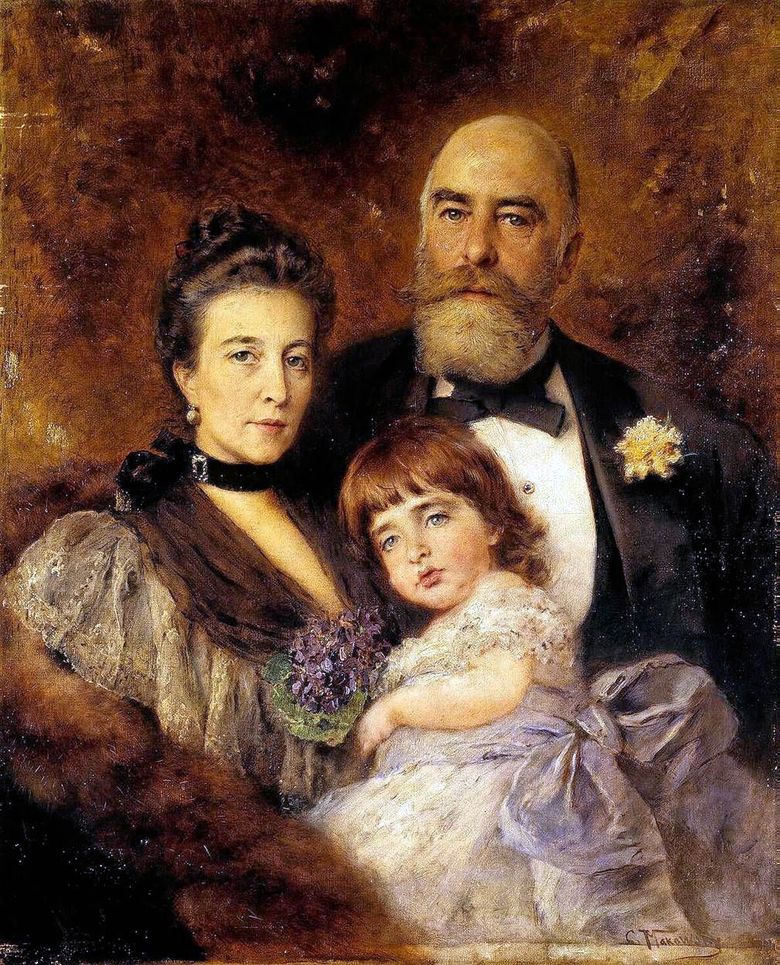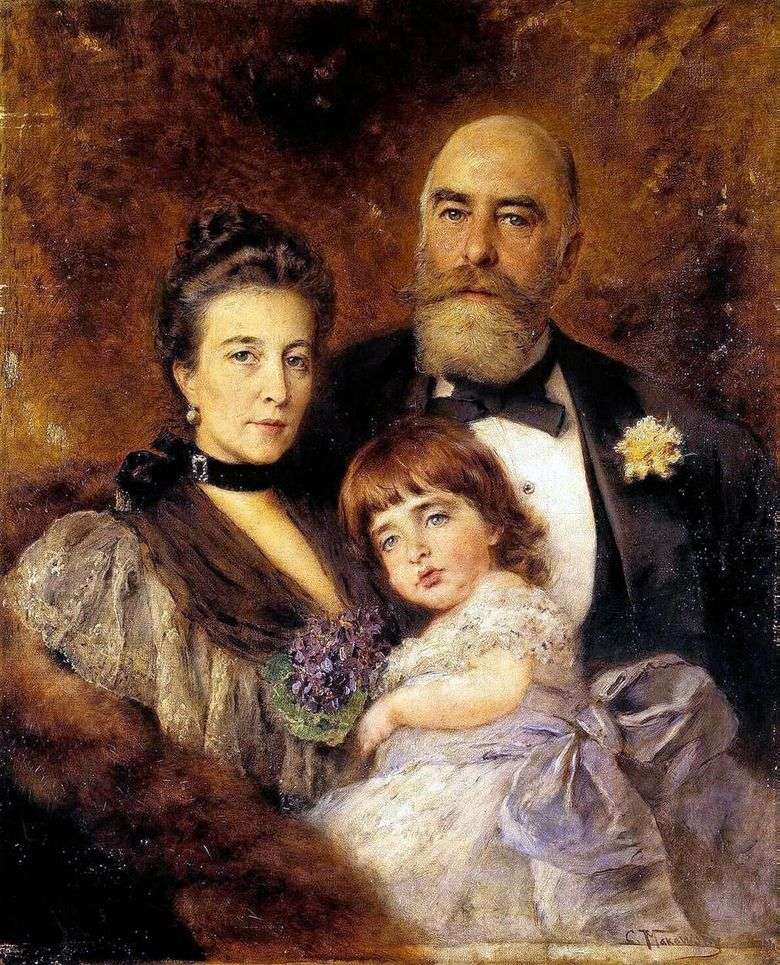
In the works of Konstantin Makovsky reflected all the features of salon art. He is omnivorous, undertakes to write everything that money is paid for. His works are spectacular, banal in content, far from historical authenticity. Front portraits are beautiful in appearance, rich in beautifully written accessories. This often detracts from portrayed images. But all the flaws are bathed with the highest professional skill, the finest color.
In some of his portraits, the artist rises to the European level of skill. An example of this is the Family Portrait of the Volkovs from the collection of the State Hermitage Museum. The portrait depicts a real State Councilor, State Secretary of the State Council, Mikhail Sergeevich Volkov, his wife Sofia Nikolaevna, nee Manzey, and their son, Sergey Mikhailovich Volkov-Manzey. Content looks like the head of the family. In the image of Sophia Nikolaevna, the artist caught the features of an imperious nature and a strong character. In the center of the picture is a child dressed in a light-colored dress, tied at the waist with a blue bow, his long hair locks on his shoulders, he looks at the viewer serenely.
The fate of this family was tragic. The portrait is signed, but not dated by the artist. Based on the age of Serezha, we can assume that it was written in 1899. A year later, on February 11, 1900, Mikhail Sergeevich Volkov died in Nice from an apoplexy stroke. Sofya Nikolaevna with her son survived a lot of tragic events that fell to their lot: the First World War, the loss of property and property, the repression of the 20-30s.
For security, S. M. Volkov-Manzey after the revolution of 1917 became simply Volkov. Since 1914, they lived in Petrograd – Leningrad, where they found the Great Patriotic War and the blockade. In May 1942, at the hands of an elderly mother, Sergei Mikhailovich Volkov, depicted by a charming child in the portrait of K. Makovsky, died of dystrophy. A month later Sofya Nikolaevna herself died. The work of K. Makovsky, among other family portraits, belonged to a Leningrad collector, actor of the St. Petersburg Maly Drama Theater on Rubinstein Street, Grigory Diomidovich Dushin.
After his death, the portrait, along with the entire collection, was entered in the State Hermitage Museum. In 2002, an exhibition of portraits from the collection of the Leningrad collector worked in five halls of the Menshikov Palace. Visiting the exhibition, I saw that visitors were surprised by the clothes of Sergei Volkov-Manzey. They saw a child in a portrait on the lap of their parents, dressed in a dress, and with curls shoulder-length, and on the label it was written that the portrait depicted a boy. “This is a girl,” said the audience confidently, “there is an error in the label.” No, there was no error.
According to Orthodox tradition, children under 7 years old are pure and sinless, they are like angels and as if they do not have sex. From the age of seven, children were dressed according to their sex in male or female clothes reduced from adult models. In the picture of K. Makovsky, a blue ribbon with a dress is girded to the male gender of the child. According to the materials of Elena Nesterova and Yuriy Yepatko – employees of the State Russian Museum.
 Portrait de groupe de M. S. Volkov, S. N. Volkova et S. M. Volkov-Manzey – Vladimir Makovsky
Portrait de groupe de M. S. Volkov, S. N. Volkova et S. M. Volkov-Manzey – Vladimir Makovsky Retrato de grupo de M. S. Volkov, S. N. Volkova y S. M. Volkov-Manzey – Vladimir Makovsky
Retrato de grupo de M. S. Volkov, S. N. Volkova y S. M. Volkov-Manzey – Vladimir Makovsky On a hot day by Vladimir Makovsky
On a hot day by Vladimir Makovsky Girl with geese by Vladimir Makovsky
Girl with geese by Vladimir Makovsky On the boulevard by Vladimir Makovsky
On the boulevard by Vladimir Makovsky In the artist’s studio by Vladimir Makovsky
In the artist’s studio by Vladimir Makovsky The first coat by Vladimir Makovsky
The first coat by Vladimir Makovsky Condemned by Vladimir Makovsky
Condemned by Vladimir Makovsky